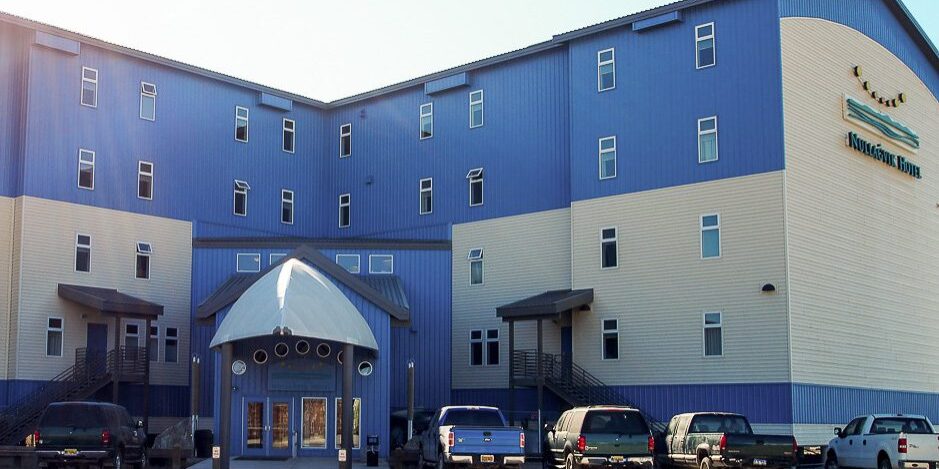In Kotzebue Thursday, a second day of community leadership meetings organized by the Alaska Industrial Development and Export Authority—or AIDEA—continued discussions on a proposed road to the Ambler Mining District.
Though the road is still in the preliminary planning phase, stakeholders from across the state flew in Wednesday for presentations. In the Nullagvik Hotel, just across the street from Kotzebue Sound, dozens piled into a conference room, filling up seats and spilling at times into the hallway.
At tables facing a podium near the front of the room, leaders and representatives from communities near the road’s proposed path gathered to talk about the project.
“This doesn’t happen very often, where we get villages from different regions sitting in the same room, sitting side by side,” said Joy Huntington, a consultant for AIDEA. “So, just to promote that, we really want relationships to be established here, not just conversations. We want you to go away having formed some good relationships.”
Huntington was helping moderate community outreach, with an early emphasis on listening. Northwest Arctic Borough mayor Reggie Joule stressed that overall judgements about the mining road should be reserved until after there’s been more dialogue.
“Whether you’re for this process or not, be at the table. Be inside the tent. Make a difference. It’s important. Welcome, and thank you,” Joule said.
To date, AIDEA has held about 30 community meetings about the road, but the meetings in Kotzebue Wednesday and Thursday were the first time a large group from across the various communities any project would impact had been brought together in one place. That was partly a result of input the agency had gotten from communities who said they wanted to hear directly from others.
Gary Hanchet, the mayor of Bettles, said cross-regional dialogue is important because he doesn’t think the severity of his town’s opposition to the project has yet come through.
“We find it very disturbing that, while we want to be respectful here, it’s just like we don’t exist,” Hanchet said. He said the feeling is as if “everything is going to go through anyway. That’s going to be the end of our way of life.”
Hanchet added solemnly: “It’s been brought up before about progress. Not everyone views progress in the same way.”
In addition to civic and tribal leaders, there were also representatives from a number of other relevant groups.
“This is really your meeting that you’ve requested,” Huntington said to the assembled group. “We put you at the front, so you can be the strong voices heard. As you can see, we have the Borough Assembly here, NANA’s here, [Tanana Chief’s Conference], Doyon, the Department of Natural Resources, our village corporations as well, AIDEA is present as well, Dowl HKM—who you’ll see, they’ve put a lot of these presentations together for us.”
Organizers said Wednesday’s schedule of speakers was mostly a matter of who was available from various agencies. With four chartered flights and representatives from Anchorage, Fairbanks, and elsewhere all traveling to Kotzebue, the schedule was somewhat of a balancing act. Thursday’s session includes a 2.5 hour dialogue between community members from the Upper Kobuk and Koyukuk River communities, along with presentations by the Departments of Fish and Game and Health and Social services.
Though there are many strong feelings about the road, at the evening performance by Kotzebue’s Northern Lights drum and dance group, a spirit of mutual cooperation prevailed. Athebascan danced with Inupiat, and environmentalists with mining executives.
The meetings in Kotzebue continue Thursday.







